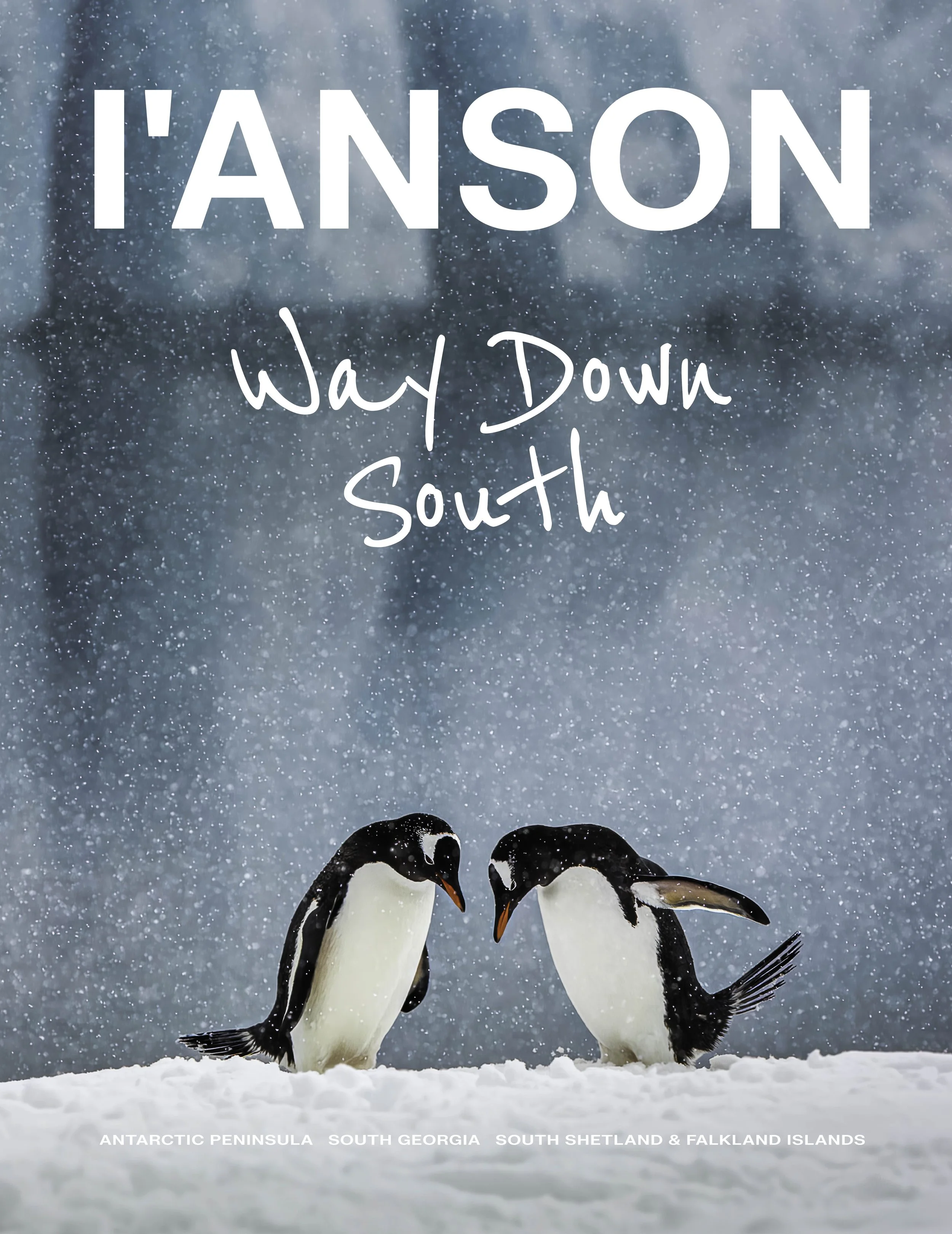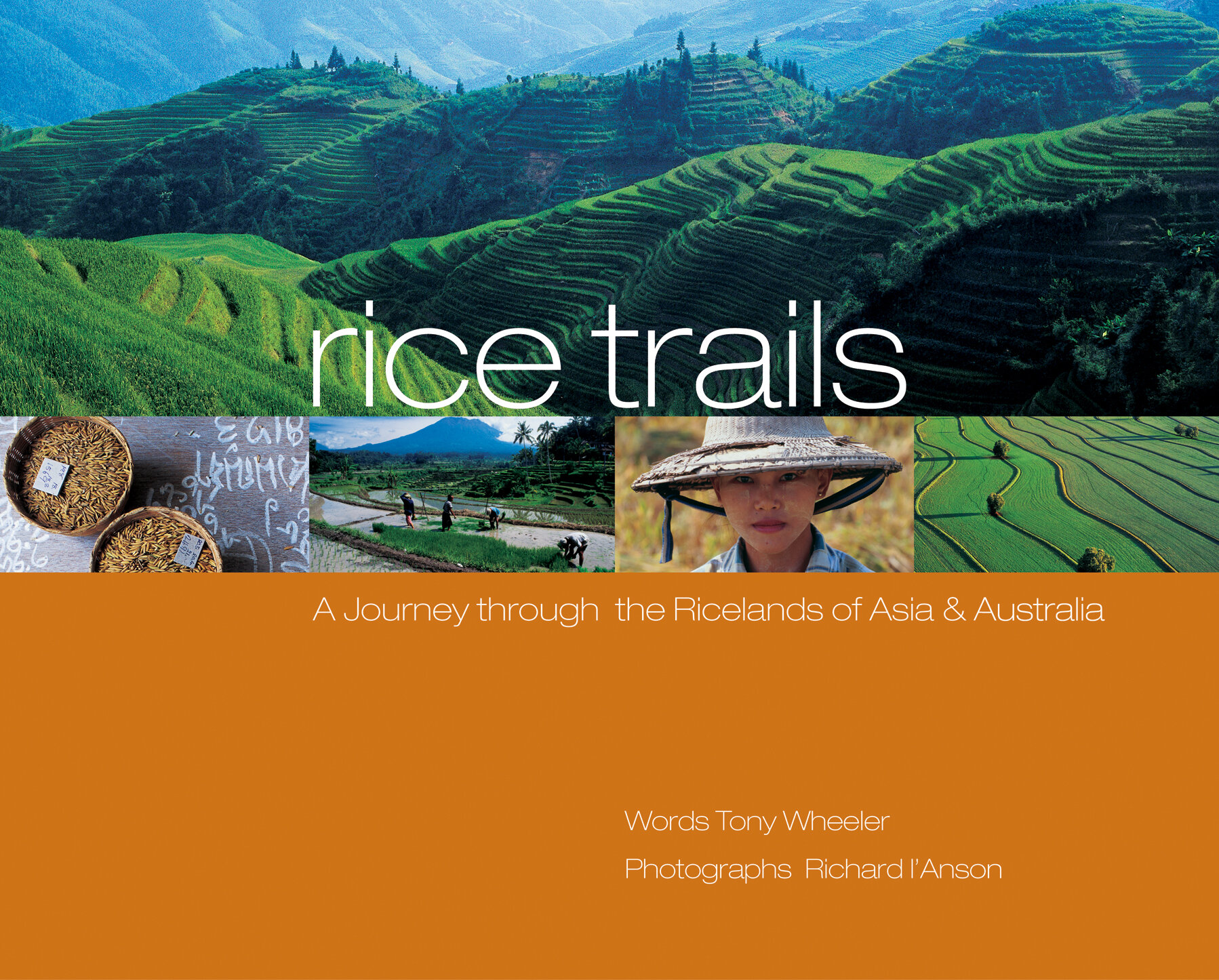Photography Books
In association with Lonely Planet I’ve published thirteen books. The large format pictorials, Chasing Rickshaws (1998) and Rice Trails: A Journey through the Ricelands of Asia and Australia (2004), are both collaborations with Lonely Planet co-founder and author Tony Wheeler, and are the result of several intensive trips to research and photograph the subject matter.
Australia: 42 Great Landscape Experiences (2006), Nepal: Kathmandu Valley, Chitwan, Annapurna, Mustang, Everest (2007) and India: essential encounters (2010) are the culmination of many trips to these destinations over twenty years. My experience in the business has also given me the material to write and photograph a couple of ‘how to’ books: the bestselling Lonely Planet’s Guide to Travel Photography (2000, 2004, 2009, 2012 and 2016), Lonely Planet’s Best Ever Photography Tips (2013 and 2017) and Urban Travel Photography: A Guide to Taking Better Pictures (2006).
My latest book, Way Down South is scheduled to be released in October 2025 and is available for pre-order in the shop.
Way Down South
For Way Down South I have selected 213 colour photographs showcasing the stunning and dramatic landscapes and abundant wildlife of the Antarctic Peninsula, South Georgia, the South Shetland and Falkland Islands to create an epic volume of landscape and wildlife photography that takes the viewer on a remarkable visual journey to some of the southern polar region’s most remote, beautiful, fragile, dynamic, and significant locations.
The photographs are complemented by evocative and thoughtful texts from Greg Mortimer OAM and Howard Whelan, two of the world’s most experienced polar adventurers and expedition leaders.
Ten years in the making, I made first trip to Antarctica in 2006 and have returned regularly since 2016 to the Antarctic Peninsula and South Georgia on photography assignments, as a guest speaker and leading photography expeditions.
Photographs by Richard I’Anson
Foreword by Greg Mortimer
Essay by Howard Whelan
370 x 290 mm / 11⅖ x 14½ in, 368 pages, hardcover with dust jacket
368 pp, 213 colour photographs
Richard I’Anson Photography, October 2025
Lonely Planet’s Guide to Travel Photography
Lonely Planet’s Guide to Travel Photography (originally titled Travel Photography: A Guide to Taking Better Pictures) was published in 2000 and quickly became a best-selling title with the first four editions selling over 150,000 copies. The fifth edition, released in July 2016, is fully revised and updated for the digital photographer and provides a comprehensive look at all aspects of travel photography.
Travel Photography aims to increase the percentage of good photographs you take by giving you the information you need to make the most of the picture-taking situations that come your way. It will help you create photographic opportunities and to make your travel experience more photo friendly. Understanding the elements that go into creating good photographs means that you can learn to repeat them, and take control of the picture-taking process. Every decision you make, including choice of camera and lens; the combination of ISO setting, shutter speed and aperture; whether you use a tripod or not; the position from where you take the photo; and the time of day is a creative decision. It’s certainly easier to let the camera make some of those decisions for you.
However, if you want to elevate your images from simple record shots of your travels to the next level of quality and individuality, then you need to take control of all the elements that go into creating photographs. Whatever equipment you have from compact point-and-shoot cameras to state-of-the art DSLRs, Travel Photography will help you take that control.
Words and Photographs by Richard I’Anson
165mm x 210mm
376 pp, 360 colour photographs
Lonely Planet, fifth edition, 2016
India: essential encounters
India is one of the most exotic, diverse, colourful, exciting, challenging, welcoming and beautiful countries on the planet, and consequently has been capturing the imagination of travellers for centuries.
My imagination was well and truly captured on my very first visit in 1986, since then I’ve returned more than 30 times to photograph people and places all over country, from the pristine landscapes and remote villages of the Himalaya and the north-east states, to the pulsating cities of the northern plains, and from the palm-fringed beaches and waterways of the south to every major festival, monument and temple. For India: essential encounters, I’ve selected more than 650 colour photographs, featuring 44 of India’s most captivating destinations that reveal the diversity and experience of a remarkable country. Each ‘encounter’ is concisely introduced with an evocative and informative text by acclaimed travel writer Sarina Singh.
Words by Sarina Singh
Foreword by Nandita Das
Hardback, 310mm x 280mm
384pp, 680 colour photographs
Produced by Richard I’Anson for Lonely Planet, 2010
Out of print
Nepal
I first stepped off the overnight bus from Varanasi in India onto the streets of a deserted Kathmandu on a cold and foggy October morning in 1986. Then it was just another new country in a seven-month journey; little did I know that Nepal would be at the forefront of my travel plans for the next 20 years. The signs were there from the start: leaving Kathmandu after just four days to trek the Annapurna Circuit I realised I had hardly scratched the surface of a remarkable city, let alone the valley in which it stands. After only a few days into my first trekking experience plans for the next trek were already well developed. Twenty-one days later, sitting by the lake in Pokhara, they were all but set in stone, such is the joy of trekking and the allure of the country. As the return journeys mounted over the years the feasibility of producing a book increased organically. Around 2002 the structure fell into place and every trip after that was aimed at rounding out my collection of images to capture the diversity and beauty of the Kathmandu Valley, Chitwan, Annapurna, Mustang and Everest, the five regions that always capture the imagination of visitors.
The end result is a large format, pictorial book featuring over 400 photographs that celebrate a unique, ethnically diverse culture living amid incredible natural and urban environments – a heady mix that also includes accessible wildlife, outrageously colourful festivals, an artistic heritage spanning hundreds of years, and a welcoming people who inspire so many travellers to return again and again.
Each chapter opens with introductory text and many of the images are accompanied by extended captions. The book is enhanced by a reflective foreword by Peter Hillary.
Photographs and text by Richard I’Anson
Foreword by Peter Hillary
Hardback, 300mm x 300mm
272pp, 405 colour photographs
Produced by Richard I’Anson for Lonely Planet, 2007
Out of print
The book is still available in bookshops in Kathmandu and Pokhara, .
Australia: 42 Great Landscape Experiences
From the moment I determined to make a career out of photography I set my sights on being a landscape photographer. At the time the target of my intent was the Australian landscape. It transpired that the more general subject matter of travel photography and a considerably wider geographical range would become the focus of my work.
However, my original desire to see and photograph Australia never waned. Every opportunity to head out into the wide open spaces of this remarkable country has been gratefully taken. Time in the Australian outback, concentrating on a single subject matter has always offered a pleasing counterpoint to the many days spent in crowded urban environments overseas, photographing a multitude of subjects.
Australia: 42 Great Landscape Experiences is the culmination of 25 years work and the result is a suitably substantial book featuring the 42 natural features that I consider the ‘must see’ sights of the Australian landscape, plus the equally spectacular, but often lesser known, places and features around them. The destinations have been selected not only for their wild grandeur, but because they’re accessible to everyone. So, if you’re thinking about your next trip, or have memories of previous Australian journeys, you’ll find Australia a rich experience, with fresh inspirations or memories at the turn of every page.
The photographs are complimented by a foreword written by George Negus, an evocative introduction and text by John Ross and extended image captions.
Photographs by Richard I’Anson
Words by John Ross
Foreword by George Negus
Hardback, 330mm x 260mm
368 pp, 319 colour photographs
Produced by Richard I’Anson for Lonely Planet Publications, 2006
Out of print
Urban Travel Photography
Urban Travel Photography: A Guide to Taking Better Pictures, introduces you to the wide range of subject matter that you’ll encounter in any city, big or small, anywhere in the world. It aims to lift your photography to the next level of creativity with practical advice, tried and tested tips and inspirational images sure to get you thinking about both your photography and your next trip.
Words and Photographs by Richard I’Anson
128mm x 197 mm
176 pp, 205 colour photographs
Lonely Planet Publications, 2006
Out of print
Rice Trails: A Journey through the Ricelands of Asia & Australia
My second collaboration with Tony Wheeler takes an in-depth look at the business of growing rice in Asia. Not only is rice humanity’s most important food (everyday more calories of rice are consumed than anything else) but it’s also the most beautiful crop on earth, whether it’s grown in the spectacular paddies tripping down the hillsides in the Philippines, China and Indonesia, each step a little masterpiece of artistic perfection or the sweeping laser-levelled bays of pancake-flat Australia. To trace the story of rice they visited, talked with, interviewed, watched and photographed rice farmers, rice processors, rice dealers, rice merchants, rice researchers and even, at the very end of the chain, rice consumers in 13 different countries, each one with distinct differences and points of interest.
Words by Tony Wheeler, Photographs by Richard I’Anson
Hardcover with jacket
240mm x 300mm
160 pp, 206 colour photographs
Lonely Planet, 2004
Out of print
Chasing Rickshaws
Rickshaws are a fascinating means of transport and human activity that in some cities is disappearing fast; they are also wonderfully varied examples of technical ingenuity and are often beautiful examples of folk art. Richard has been riding around Asia in them for years so jumped at the chance to take the photographs for such an interesting, ambitious and photogenic project.
Tony and Richard visited 12 Asian cities – Yogyakarta, Singapore, Penang, Dhaka, Calcutta, Agra, Rangoon, Manila, Hanoi, Beijing, Hong Kong and Macau – each one selected because their rickshaws are either unique or are representative of their region. The primary focus was on bicycle rickshaws but they also included the man pulled rickshaws of Calcutta and Hong Kong to provide a historical context to the development of the cycle rickshaw.
The result of there efforts is a book which looks at every aspect of the rickshaw business including the different styles of rickshaws, the factories where they’re made and restored, the mechanics who keep them on the road, the shops that sell the components, the artists who paint them, the riders and their bosses, the history, the economics and the politics. As Tony writes in his introduction, the machines, their riders and their customers have been studied by engineers, evaluated by transport economists and analysed by sociologists. They’re celebrated in Chasing Rickshaws.
Words by Tony Wheeler, Photographs by Richard I’Anson
Hardcover with jacket
240mm x 270mm
192 pp, 224 colour photographs
Lonely Planet Publications, 1998
Out of print.


















